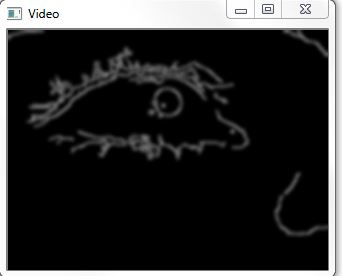Hough circle for pupil detection
Hi
I'm trying to detect eye pupil by :
- process the frame with VideoCapture function
- Convert it into Gray Scale Image.
- Find Canny Edges using cv2.Canny() function
- Apply HoughCircles function. It will find the circles in the image as well as center of the image.
- Use the resulting parameters of HoughCirlces to draw the circle around the pupil.
I did successfully finding canny edge and I applied Houghcircle function .
But when I run the code no circle displayed around the pupil as shown in the attachment .
I need help please.


It's difficult to help you without some codes. Can you post original image aand some code?
Like @LBerger said, without any code on how you apply the HoughCircle detection it is far to difficult to even guess what is happening. The range of possible values for the Hough parameters is just to large for that! Could you maybe add also your original image? I think that the solution is FAR more easier then you expect!